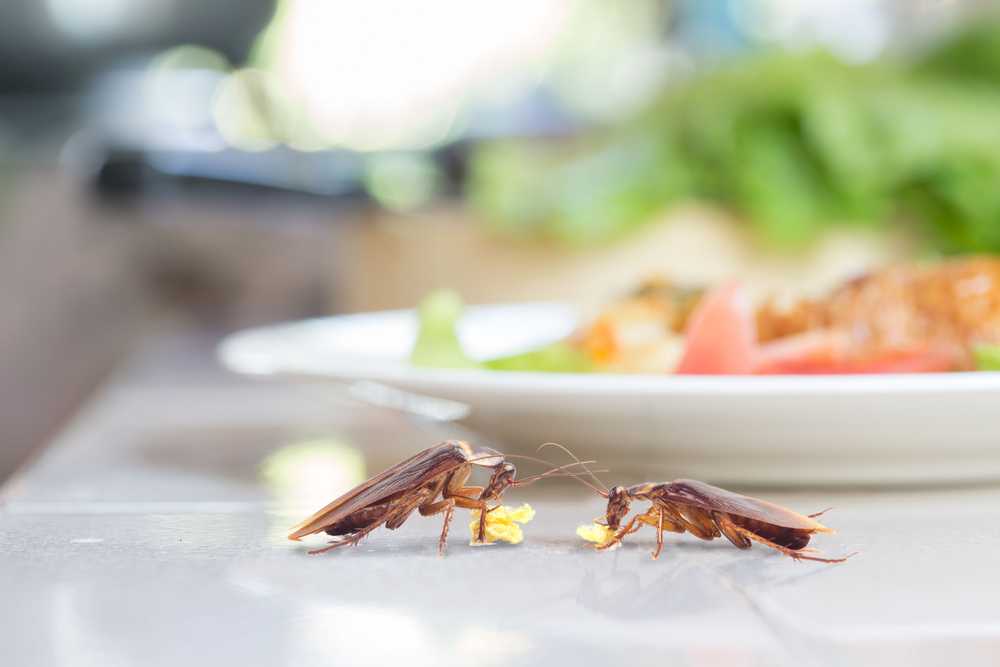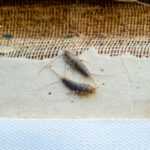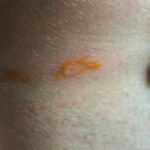How to Identify and Get Rid of Small Roaches Quickly
Dealing with small roaches? This guide covers how to identify common types like German and Brown-banded roaches, spot infestation signs, and eliminate them effectively.
- Accurate identification of small roaches, such as German, Brown-banded, and Asian cockroaches, is crucial for effective pest control.
- Signs of infestation include droppings, egg cases, and shed skins, which should be checked regularly to catch problems early.
- Preventing future infestations involves proper food storage, avoiding leaving pet food out, and sealing cracks and crevices to block entry points.
Identifying Small Roaches
Correct identification of small roaches helps in choosing the most effective elimination method. Tiny roaches can be confused with baby cockroaches or other pests, resulting in ineffective treatments. Observing the body shape, color, and location helps distinguish a tiny adult roach from an adult roach or cockroach nymph. Additionally, shed cockroach skins, which are light brown and oval-shaped, are often found in roach habitats, can provide clues.
Different types of small roaches have unique characteristics that can help in identification. The most common types of small roaches include German cockroaches, Brown-banded cockroaches, and Asian cockroaches. Each type has distinct features and behaviors, so accurate identification is key for effective population control.
Knowing the specific traits of these roaches aids in easier identification and appropriate pest control methods.
German Cockroaches
German cockroaches, common indoor pests, are light brown with two dark stripes on their backs, making them easily identifiable. Thriving in warm, humid environments, these roaches multiply quickly while remaining hidden. They can produce dozens of eggs in one batch, with their egg cases being oval, brown, or tan, and measuring about 5 to 10 millimeters in length. The presence of a German roach can indicate a larger infestation.
Carrying disease-causing bacteria, German roaches can trigger allergies and asthma, posing significant health risks. Their rapid reproduction and hidden lifestyle can quickly lead to severe infestations, requiring prompt and effective pest control.
Brown-banded Cockroaches
Brown-banded cockroaches are typically 1/2 to 5/8 inches long and prefer warmer, drier environments. Distinctive light cream-colored bands across their wings and abdomen make them identifiable. These roaches are commonly found in kitchens, bedrooms, and living rooms, where they seek out warm and dry hiding spots.
Unlike German cockroaches, Brown-banded cockroaches are less dependent on moisture, enabling them to inhabit a wider range of indoor environments. Their preference for higher, drier locations like attics and behind furniture makes them more challenging to detect and eliminate.
Asian Cockroaches
Asian cockroaches measure between 1/2 to 5/8 inches in length, similar to Brown-banded cockroaches. They are distinguishable by their ability to fly and their attraction to light. These asian roaches often enter homes by flying through open windows and doors, drawn by indoor light sources.
Asian cockroaches can fly into homes through entry points not sealed against crawling pests. Attracted to light, they may enter areas less likely to harbor other roach species, requiring specific control measures.
Signs of a Cockroach Infestation
Early recognition of cockroach infestation signs can prevent a small issue from becoming a major problem. Key indicators of cockroach presence include droppings, egg cases, and shed skins, often found in areas they inhabit.
Small roaches seek refuge in dark, warm environments during the day, making discarded skins and droppings valuable clues. Regularly checking common hiding spots for these signs can help catch an infestation early and prompt appropriate action.
Examining each of these signs reveals how they indicate a cockroach problem.
Roach Droppings
Cockroach droppings are dark, small, and can resemble coffee grounds or black pepper. Found in small quantities, these droppings appear in areas where roaches are active, like kitchens and bathrooms. These droppings strongly indicate a cockroach infestation.
Finding roach droppings should prompt immediate action to identify and eliminate the infestation source. Regular cleaning and monitoring of high-traffic areas help manage and reduce roach activity.
Egg Cases
Cockroach egg cases, or oothecae, are oval-shaped and often concealed in hidden areas. These egg cases are typically located in cracks and crevices where roaches can easily hide them. Inspecting these hidden areas for egg cases is crucial for managing and eliminating roach populations.
Finding egg cases indicates breeding roaches and potential infestation growth if not addressed promptly. Identifying and removing these egg cases can help control the roach population.
Shed Skins
Shed skins, or exoskeletons, strongly indicate an increasing cockroach population. These discarded skins are found in areas where roaches hide and molt. Identifying shed skins helps determine infestation severity and guide appropriate pest control measures.
Finding shed skins indicates growing and molting roaches, meaning the population is increasing. Regularly checking and removing these skins helps manage and reduce the infestation.
Common Hiding Spots for Small Roaches
Knowing common hiding spots for small roaches is crucial for effective pest management. Roaches hide in dark, warm, and moist environments where they find food and water. Knowing where to look helps target pest control efforts more effectively.
Common hiding spots include kitchens, bathrooms, and living rooms, each offering unique hiding places roaches exploit. Exploring these locations in detail reveals common hiding spots.
Kitchens
Kitchens are prime locations for small roaches due to abundant food sources and water access. Roaches commonly hide under sinks, behind appliances, and inside cabinets where they find food and moisture. Identifying and cleaning these spots is crucial for effective pest control.
Regularly inspecting and cleaning these areas helps reduce infestation likelihood. Proper food storage and prompt cleanup of spills deter roaches from settling in your kitchen.
Bathrooms
Small roaches commonly hide under sinks in bathrooms, around pipes, and in damp areas where moisture accumulates. Water presence makes bathrooms attractive hiding spots for roaches, offering both shelter and hydration.
Keeping bathrooms clean and dry, fixing leaks, and sealing cracks reduces the chances of roaches finding a home. Regular maintenance and cleaning are key to preventing bathroom infestations.
Living Rooms
In living rooms, roaches conceal themselves inside furniture, electronics, and behind baseboards, where they are less likely to be noticed. Furniture, especially plush items, provides excellent hiding spots for small roaches during the day. Baseboards and wall voids are also common hiding places.
Regularly inspecting and cleaning these areas, along with keeping food out of living rooms, helps prevent roach infestations. Proper storage and minimizing clutter reduce hiding spots for roaches.
Effective Methods to Eliminate Cockroaches
Eliminating cockroaches requires a combination of methods for effective control and eradication. DIY methods can be effective and cost-efficient, but evaluating the extent is crucial for choosing the right approach. Key methods include roach baits, sticky traps, and professional pest control.
Knowing the benefits and proper use of each method aids in effectively tackling a cockroach problem.
Roach Baits
Bait stations effectively control roach infestations by attracting and poisoning the pests. Place bait stations in areas where roaches are frequently encountered for maximum effect. Roach baits eliminate cockroaches by directly targeting their population.
Using bait stations with other pest control methods enhances effectiveness and manages infestations more efficiently.
Sticky Traps
Sticky traps effectively catch small roaches. Place them in high-traffic areas like kitchens and bathrooms. Combining sticky traps with other methods like roach baits or professional pest control enhances overall effectiveness.
Sticky traps monitor roach activity and visually confirm infestation presence and severity.
Preventing Future Infestations
Preventing future infestations is key to maintaining a cockroach-free home. Eliminating food sources, storing pet food properly, and sealing gaps and cracks are essential in preventing infestations. Regular monitoring and maintenance help ensure roaches do not return.
These preventive measures significantly reduce the likelihood of cockroach infestation. Exploring these steps in detail reveals their importance in preventing infestations.
Store Food Properly
Keep food in airtight containers to prevent cockroach access. Tightly sealed containers help eliminate food sources that attract small roaches. Proper food storage is a simple and effective way to prevent future infestations.
Regular inspection and cleaning of food storage areas further deter roaches from invading your home.
Avoid Leaving Pet Food Out
Properly storing pet food significantly helps in preventing cockroach infestations. Leaving pet food out attracts roaches, providing easy access to food sources and encouraging their presence. Using airtight containers for pet food and promptly cleaning spills can mitigate this risk.
Maintaining a clean environment and avoiding food left out will reduce the likelihood of attracting roaches. Ensuring pet food is stored correctly and promptly cleaning up after pets can go a long way in preventing future cockroach infestations.
Seal Cracks and Crevices
Sealing entry points is crucial in preventing cockroaches from entering your home and establishing a colony. Use caulk to seal small cracks and crevices around windows, doors, and baseboards. Installing door sweeps and weather stripping can close gaps at the bottom of doors and windows, further reducing entry points.
By blocking these entry points, you can prevent roaches from accessing your home. Regular inspection and maintenance of your home’s structure can help ensure these potential entry points remain sealed, reducing the likelihood of future infestations.
Identifying and eliminating small roaches quickly is essential to maintaining a healthy and comfortable home. By recognizing the different types of roaches, understanding the signs of an infestation, and knowing where to look for these pests, you can take effective action to control and prevent infestations. Utilizing methods such as roach baits, sticky traps, and professional pest control services can help eliminate roaches and keep them from returning.
Preventive measures, including proper food storage, avoiding leaving pet food out, and sealing entry points, are key to ensuring that roaches do not find a way back into your home. Taking these steps will help keep your home roach-free and protect your family from the health risks associated with cockroach infestations. If you need professional help, don’t hesitate to contact Gopher Patrol for expert pest control services.
Frequently Asked Questions
How can I differentiate between baby cockroaches and small adult roaches?
You can differentiate baby cockroaches (nymphs) from small adults by noting that nymphs have a more elongated body shape and do not possess fully developed wings. In contrast, small adults will have a more rounded body and visible wing stubs.
What are the signs of a cockroach infestation?
The signs of a cockroach infestation include droppings resembling coffee grounds or black pepper, the presence of egg cases in hidden spots, and shed skins, all indicating an increasing population. Addressing these signs promptly is crucial to prevent further infestation.
Where are the common hiding spots for small roaches?
Small roaches commonly hide in kitchens under sinks and behind appliances, in bathrooms around pipes and damp areas, and in living rooms within furniture and behind baseboards. Keeping these areas clean and well-maintained can help in preventing infestations.
How can I effectively use roach baits?
To effectively use roach baits, strategically place them in areas where roaches are commonly seen, like kitchens and bathrooms, to maximize consumption and reduce their population. Proper placement is key to your success.
What preventive measures can I take to avoid future cockroach infestations?
To avoid future cockroach infestations, store food in airtight containers, don’t leave pet food out, and seal any cracks or crevices around doors and windows. These steps will help block entry points and minimize food sources for roaches.





